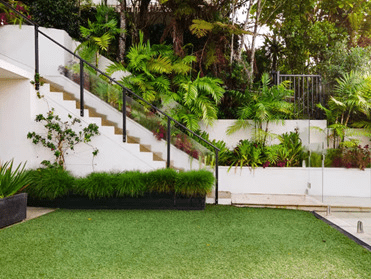
Establishing Wildflowers in your yard will draw butterflies, birds, honey bees, and natural life into your nursery and humans. Yards can be profound and lavish, yet as each groundskeeper knows, a great grass is both dried and work concentrated.
Many individuals are searching for yard choices to make a front region without all the watering, treating, and cutting. Wildflower yards or areas of blooming grass weeds can be enchanting and simple upkeep once settled with some turf supplies.
A wildflower yard is not difficult to develop, excellent when in full blossom and low upkeep—requiring cutting around double a year, more with regards to that later.
Things To Checklist For A Wildflower Lawn
- The size of the glade region
- Existing grass yards
- Uncovered ground
- Wild-grass
Why Is A WildFlower Lawn The Better Choice?
The main lawn isn’t simply an issue to keep up with; it’s also costly. Cutting, preparing, weeding, and watering all take time and cash. What’s more, yards aren’t well disposed to the climate.
Cutting consumes fuel and regurgitates exhaust; pesticide and compost overflow contaminates streams, and successive watering polishes off an immense measure of this valuable asset. A wildflower knoll, then again, needs no preparing, next to zero supplemental water, and simply a once-a-year cutting.
Supplanting some or all of your grass with a wildflower knoll is a great other option because that kind of meadow is easy. It does, in any case, take a few preparation and arrangement. Here are rules for getting your planting looking solid so far.
Five Stages to Fruitful Wildflower Planting
1 Choosing the Establishing Site
Most wildflowers prefer full sun and all around depleted soil for growth. Keep away from regions where water puddles after a downpour. Assuming you’re changing a portion of your grass over to wildflowers, consider the areas that are challenging to cut, like slopes.
2 Picking a Seed Blend
Go with a local wildflower blend or a blend focused on your specific developing circumstances and requirements.
3 Setting Up the Planting Site
Whether you’re establishing five sections of land or five square feet, the better you set up the area, the better your outcomes. Start by eliminating existing vegetation. It’s vital to stop or kill establishes that would somehow contend with the developing wildflower seeds for light, water, and supplements.
4 Planting the seed
Pick a windless day, and start by separating the seed down the middle. Put the primary half in a perfect compartment and afterwards include around ten sections of the manufacturer’s sand to one root.
Many kinds of wildflower seed expect the light to grow, so don’t rake over the area or cover the source. Pack the basis onto the dirt surface; this seed-to-soil contact helps germination.
5 Early consideration
While specific wildflower species sprout in just eight days, others might take significantly longer. Keep the establishing region sodden until the seedlings get laid out, which requires four to about a month and a half. The plants shouldn’t need watering from that point onward except if you experience a delayed dry season.





